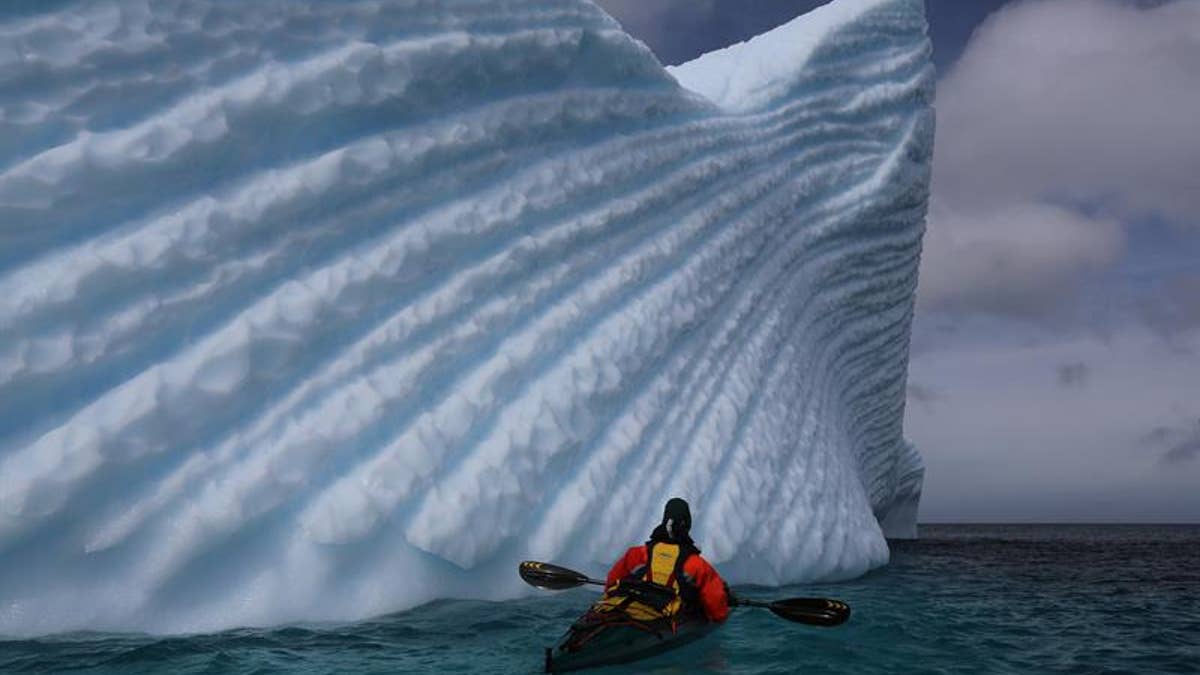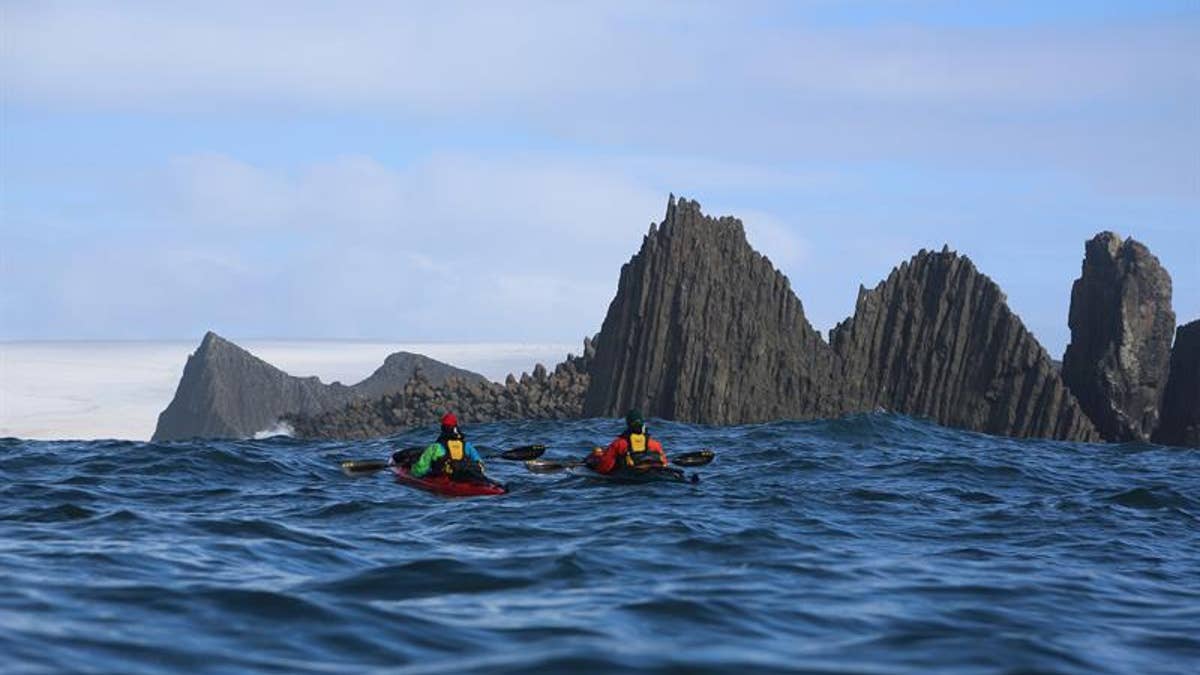
The group had to deal with winds of more than 20 knots and waves over 16.5 feet. (EFE)
SOUTH SHETLAND ISLANDS, ANTARCTICA – A three-man team has completed the first journey by kayak around the South Shetland Islands, an archipelago off Antarctica, traveling more than 100 miles by sea without any kind of external aid.
Chileans Cristian Donoso and Exequiel Lira, along with Spaniard Roger Rovira returned to continental Chile this week after kayaking for 11 days around the islands in extreme weather conditions.

They said the wind, not the cold, was the main navigational problem. (EFE)
They said the desire to become the first to travel around the archipelago by kayak and see the beauty of that remote region were their top motivation.
Their adventure started on Jan. 26.
"It's a little visited area, with lots of islets and difficult access for large boats, and so everything had an aura of the unexplored," expedition leader Donoso, who has rowed more than 930 miles in the Antarctic, told EFE.
For 11 days, the trio covered 12-18 miles per day, making their way among the islands of Livington, Greenwich, Barrientos, Robert, Nelson and King George.

Each man carried two flares, two satellite telephones, a life jacket with radio, a knife and a whistle (EFE)
The group had to deal with winds of more than 20 knots and waves over 16.5 feet in one of the most inhospitable and desolate parts of the planet.
The expedition had no outside help of any kind, a constraint that forced the sportsmen to be self-sufficient and handle any difficulties that cropped up on their own.
Each man carried two flares, two satellite telephones, a life jacket with radio, a knife, a whistle and all the items they would need during their expedition, including a tent, a small cooker and bags.
"We had to have all the necessary resources within the limited room in the kayaks. Nevertheless, you can never be 100 percent sure, so it's important to be very flexible and have lots of imagination to improvise solutions with limited means," Donoso said.
Hypothermia posed the greatest risk on the expedition and the men were equipped with waterproof suits, thermal shelters, thermoses with hot water and survival blankets in case any of them fell into the frigid ocean.
Despite the fact that the air temperatures didn't get below freezing, the heavy windgusts created a windchill factor of 5 degrees F and it was the wind, not the cold, that was the main navigational problem.
"The winds were one of the expedition's main difficulties. In Antarctica, weather predictions are not very exact and the coast is very rugged, so the wind can make landing the kayaks even more difficult," Donoso said.
After sailing for between five and six hours each day, the men looked for a place to land, erect their tent and melt ice to make water. The rest of the day they spent exploring the area around their camp and looking at the local wildlife.
"In Antarctica, the fauna evolved without the presence of humans and so they're not afraid (of us). This doesn't happen anywhere else in the world. It's like being on another planet," said Donoso, for whom this was the third kayak trek he had made in Antarctic waters, although he's made more than 40 expeditions in other inhospitable regions, such as Alaska and Patagonia.
"I'm not looking to feel the adrenaline. The risk doesn't attract me. I'm looking to connect with that wild environment and flow with it. For many people, doing something like this is scary but it makes me immensely happy," he said.
The South Shetland Islands lie about 75 miles north of the Antarctic Peninsula and are claimed by the United Kingdom, Chile and Argentina, although according to the 1959 Antarctic Treaty, the islands' sovereignty is neither recognized nor disputed by the signatories.
